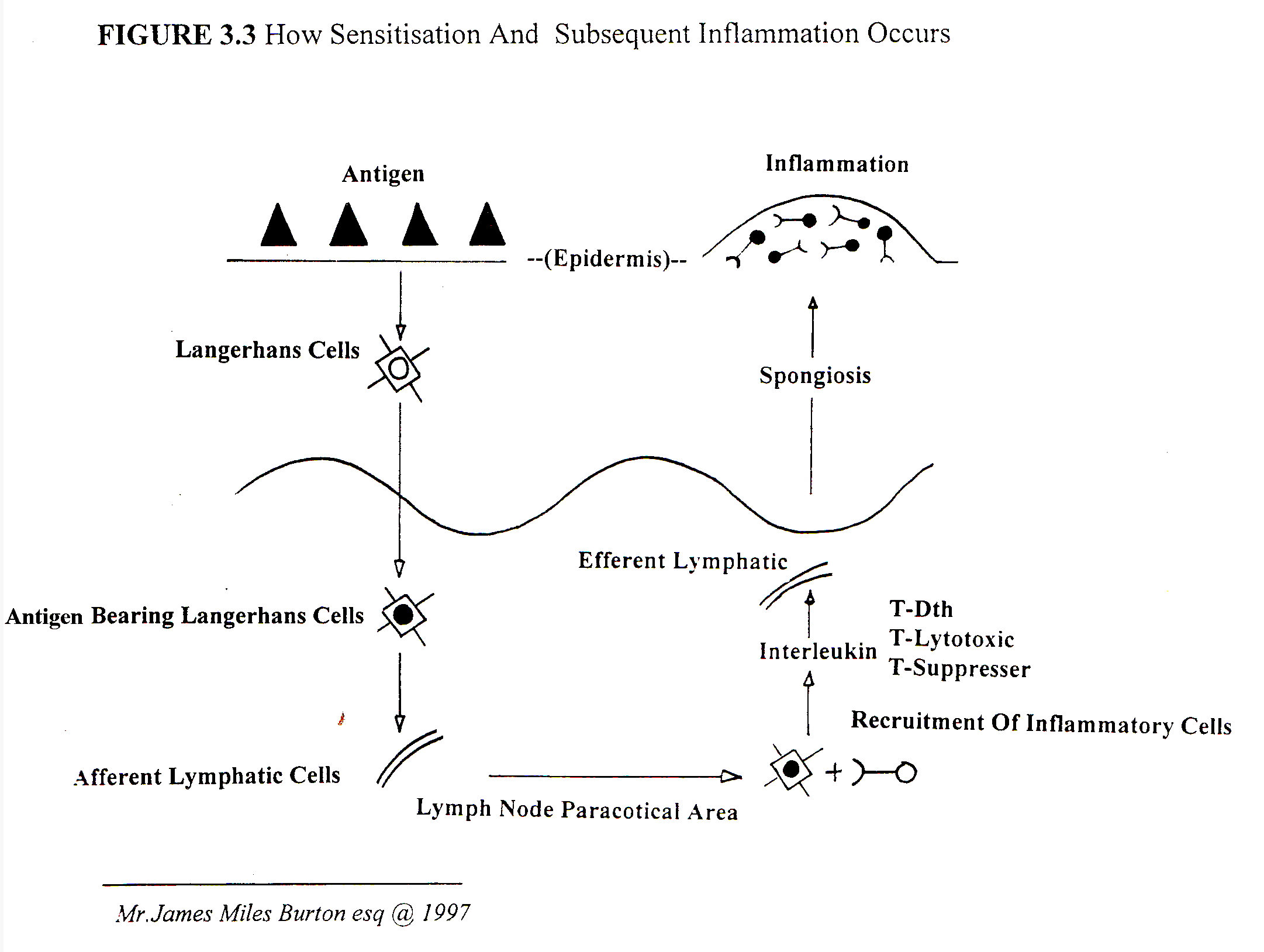| 3.0 How Dermatitis Is Caused [ 5 ] 3.1 Contact Dermatitis The epidermal cells are vital protective elements made of a many specialised cells and secretions (Chap1.32.) When an antigen penetrates these layers, which will be easier if the epidermis is damaged or no oils or acids are present, some will bind with the protein cells, which swell and inflame the skin, as it tries to be rid of the antigen, other types will destroy and dissolve these cells, by toxic chemical reaction. 3.2 Sensitisation [ 6 ] Sensitising allergens from plants with chemically reactive groups are believed to bind to the skin proteins such as Langerhans and Granstein cells in the pre eruption (Immunological) phase of dermatitis. Penetration of these low molecular compound allergens are via the sweat glands and hair follicles. Elicitation stage: Subsequent exposure to a sensitised skin by an antigen causes primed T-Lymphocytes ( 1.4.2) will release Lymphokines and interleukins, which cause the recruitment of inflammatory cells, swelling the epidermis. Figure 3.3 shows this process. FIGURE 3.3 How Sensitisation And Subsequent Inflammation Occurs |
 |
| Dermatitis In the Horticulture Industry By James M. Burton In Association With Pencoed College Copyright 1997. |
| History |
| Plant Dermatitis |